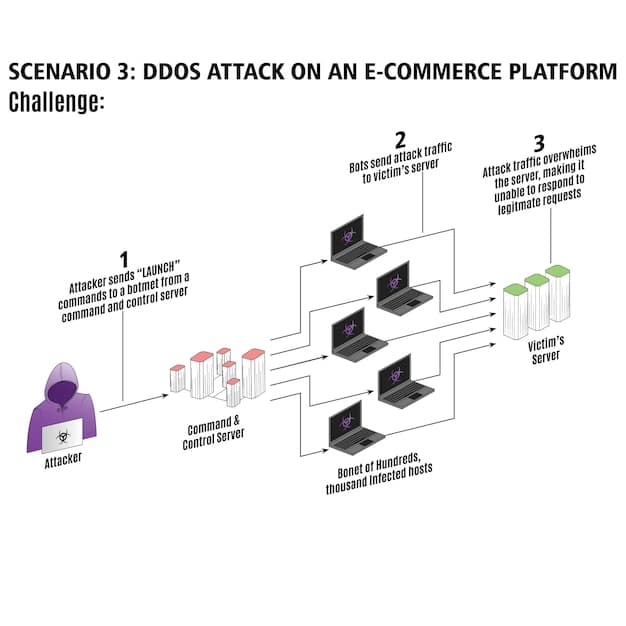E-commerce Platform Migration Checklist: Avoid a Sales Drop

E-commerce Platform Migration Checklist: 10 Steps to Avoid a 15% Sales Drop offers a structured approach to ensure a seamless transition, minimizing potential disruptions and maintaining sales momentum. By prioritizing data integrity, SEO, and customer experience, businesses can navigate the migration process effectively.
Migrating your e-commerce platform can feel like navigating a minefield. One wrong step, and you could see a significant drop in sales. That’s why having a solid E-commerce Platform Migration Checklist: 10 Steps to Avoid a 15% Sales Drop is crucial.
This checklist isn’t just about moving your store from point A to point B; it’s about safeguarding your revenue, maintaining your SEO rankings, and ensuring a smooth transition for your customers. Let’s dive into the essential steps to keep your sales figures healthy during this critical process.
E-commerce Platform Migration Checklist Overview
An e-commerce platform migration is a significant undertaking that requires meticulous planning and execution. Implementing an effective E-commerce Platform Migration Checklist: 10 Steps to Avoid a 15% Sales Drop will help minimize risks and ensure a successful transition. This checklist should cover everything from initial planning to post-migration monitoring.
Why a Checklist is Essential
A checklist provides a structured approach to the migration process, ensuring that no critical steps are overlooked. It also serves as a communication tool, keeping all team members aligned and informed.
- Reduces Errors: Helps prevent common mistakes that can lead to sales drops.
- Ensures Consistency: Maintains a consistent process across all stages of the migration.
- Improves Communication: Keeps all stakeholders informed and aligned.
Failing to address each of the critical steps in an E-commerce Platform Migration Checklist: 10 Steps to Avoid a 15% Sales Drop can lead to significant sales losses and damage to your brand’s reputation. By focusing on the key areas outlined in the checklist, businesses can ensure a smooth and profitable transition.
Step 1: Define Your Migration Goals
Before you even think about touching your existing platform, you need to clearly define your migration goals. What do you hope to achieve by switching platforms? What are your key performance indicators (KPIs)?
Setting SMART Goals
Your goals should be SMART: Specific, Measurable, Achievable, Relevant, and Time-bound. This will help you stay focused and track your progress throughout the migration process.
- Specific: Clearly define what you want to achieve. For example, “Increase mobile conversion rates by 15%.”
- Measurable: Set quantifiable targets that you can track.
- Achievable: Ensure your goals are realistic and attainable.

Defining your migration goals is the cornerstone of a successful transition. With clear, measurable objectives, you set the stage for a smooth and profitable move to your new e-commerce platform, guided by your detailed E-commerce Platform Migration Checklist: 10 Steps to Avoid a 15% Sales Drop.
Step 2: Audit Your Existing E-commerce Store
Take a comprehensive look at your current e-commerce setup. What’s working well? What’s not? What needs to be migrated, and what can be left behind?
Key Areas to Audit
This audit should cover all aspects of your store, including your product catalog, customer data, SEO performance, and third-party integrations. A thorough audit is essential to implementing an effective E-commerce Platform Migration Checklist: 10 Steps to Avoid a 15% Sales Drop.
- Product Catalog: Review product descriptions, images, and attributes.
- Customer Data: Assess the quality and completeness of your customer records.
- SEO Performance: Identify your top-performing keywords and pages.
This step will give you a clear understanding of what you’re working with and help you prioritize your migration efforts. This thorough approach is what transforms a chaotic transition into a strategically managed process, guided by your comprehensive E-commerce Platform Migration Checklist: 10 Steps to Avoid a 15% Sales Drop.
Step 3: Choose the Right E-commerce platform
Selecting the right e-commerce platform is a critical decision that can significantly impact your online business. Careful consideration of your needs, goals, and long-term vision is essential.
Factors to Consider
When choosing an e-commerce platform, consider factors like scalability, features, pricing, and ease of use. The right platform should align with your business requirements and facilitate growth. A solid grasp here is critical to your E-commerce Platform Migration Checklist: 10 Steps to Avoid a 15% Sales Drop.
Popular E-commerce Platforms
- Shopify: Known for its user-friendly interface and extensive app ecosystem.
- Magento: Offers powerful customization options for larger enterprises.
- WooCommerce: A flexible option for WordPress users.
Choosing the right platform is a foundational step in your e-commerce journey. The platform you select will shape the way you operate and grow your online business, guided by your carefully crafted E-commerce Platform Migration Checklist: 10 Steps to Avoid a 15% Sales Drop.
Step 4: Plan Your Data Migration
Migrating your data safely and accurately is paramount. This includes product information, customer accounts, order history, and any other critical data related to your business. A great plan is crucial to your E-commerce Platform Migration Checklist: 10 Steps to Avoid a 15% Sales Drop.
Data Migration Strategies
There are several approaches to data migration, including manual migration, using a migration tool, or hiring a professional service. Choose the method that best suits your technical capabilities and budget.
- Manual Migration: Suitable for small stores with limited data.
- Migration Tool: Automates the process and reduces the risk of errors.
- Professional Service: Provides expert assistance and ensures data integrity.

Careful planning ensures that your data remains intact and accessible throughout the migration process. This will help maintain business continuity and minimize disruptions, guided by your data-focused E-commerce Platform Migration Checklist: 10 Steps to Avoid a 15% Sales Drop.
Step 5: Focus on SEO During Migration
Maintaining your search engine rankings is essential to preventing a drop in sales during and after the migration. Failing to address SEO can lead to a significant loss of traffic and revenue. A SEO focus is critical to your E-commerce Platform Migration Checklist: 10 Steps to Avoid a 15% Sales Drop.
SEO Best Practices for Migration
Implement 301 redirects, update your sitemap, and monitor your rankings closely. These steps will help ensure that search engines can properly crawl and index your new site.
- Implement 301 Redirects: Redirect old URLs to their new counterparts.
- Update Sitemap: Submit your updated sitemap to search engines.
- Monitor Rankings: Track your keyword rankings to identify any issues.
By implementing these SEO best practices, you can protect your organic traffic and maintain your online visibility, guided by your SEO-conscious E-commerce Platform Migration Checklist: 10 Steps to Avoid a 15% Sales Drop.
Step 6: Test Before You Launch
Thorough testing is crucial to identify and fix any issues before your new site goes live. This includes testing functionality, performance, and user experience. Solid testing is key to your E-commerce Platform Migration Checklist: 10 Steps to Avoid a 15% Sales Drop.
What to Test
Test everything from the checkout process to product browsing to ensure a seamless user experience. Don’t overlook mobile responsiveness and cross-browser compatibility.
- Checkout Process: Verify that orders can be placed and processed correctly.
- Product Browsing: Ensure that products are displayed accurately and are easy to find.
- Mobile Responsiveness: Check that your site looks and functions well on mobile devices.
By conducting comprehensive testing, you can minimize the risk of encountering issues after launch, ensuring a smooth and positive experience for your customers, facilitated by your testing-intensive E-commerce Platform Migration Checklist: 10 Steps to Avoid a 15% Sales Drop.
Step 7: Communicate with Your Customers
Keep your customers informed about the upcoming migration and what they can expect. Transparency can help build trust and reduce anxiety. Clear communication is essential to your E-commerce Platform Migration Checklist: 10 Steps to Avoid a 15% Sales Drop.
Communication Strategies
Use email, social media, and on-site announcements to keep your customers in the loop. Be sure to address any potential concerns or questions they may have.
- Email Announcements: Send regular email updates about the migration.
- Social Media: Use social media to share news and answer questions.
- On-Site Announcements: Display a prominent announcement on your website.
By keeping your customers informed, you can prevent confusion and maintain their loyalty during the transition, underscored by your communication-focused E-commerce Platform Migration Checklist: 10 Steps to Avoid a 15% Sales Drop.
Step 8: Launch Strategically
The way you launch your new e-commerce platform can have a significant impact on your sales. Avoid launching during peak seasons or major promotional periods. Your strategic lauches are crticial to your E-commerce Platform Migration Checklist: 10 Steps to Avoid a 15% Sales Drop.
Launch Planning
Consider a soft launch to a small group of users before going live to the general public. This allows you to identify and fix any remaining issues with minimal disruption.
- Soft Launch: Roll out your new site to a limited audience first.
- Monitor Performance: Keep a close eye on key metrics after launch.
- Gather Feedback: Solicit feedback from users to identify areas for improvement.
By carefully planning your launch, you can minimize the risk of encountering major issues and ensure a smooth transition for your customers, emphasizing your launch preparations in your E-commerce Platform Migration Checklist: 10 Steps to Avoid a 15% Sales Drop.
Step 9: Monitor Post-Migration Performance
After the migration is complete, it’s crucial to monitor your site’s performance closely. This includes tracking sales, traffic, and conversion rates. Your monitoring is crucial to your E-commerce Platform Migration Checklist: 10 Steps to Avoid a 15% Sales Drop.
Key Metrics to Watch
Keep an eye on key metrics such as bounce rate, page load time, and average order value. Any significant changes could indicate a problem that needs to be addressed.
- Bounce Rate: Measures the percentage of visitors who leave your site after viewing only one page.
- Page Load Time: Indicates how quickly your pages load, impacting user experience.
- Average Order Value: Tracks the average amount spent per order.
By closely monitoring these metrics, you can quickly identify and address any issues that may arise after the migration, ensuring a continuous and positive user experience, guaranteed by your vigilant use of the E-commerce Platform Migration Checklist: 10 Steps to Avoid a 15% Sales Drop.
Step 10: Continuously Optimize and Improve
Migration is just the beginning. Continuously optimize your new platform for performance, user experience, and SEO. Continual improvement is a must for your E-commerce Platform Migration Checklist: 10 Steps to Avoid a 15% Sales Drop.
Optimization Strategies
Regularly review your analytics, gather customer feedback, and implement improvements based on your findings. This will help you stay ahead of the competition and drive long-term growth.
- Review Analytics: Analyze your site’s performance data to identify areas for improvement.
- Gather Customer Feedback: Solicit feedback from your customers to understand their needs and preferences.
- Implement Improvements: Make changes based on your findings to enhance user experience and drive conversions.
By embracing a culture of continuous improvement, you can ensure that your e-commerce platform remains competitive and continues to drive growth, sustained by your proactive adoption of the E-commerce Platform Migration Checklist: 10 Steps to Avoid a 15% Sales Drop.
| Key Point | Brief Description |
|---|---|
| 🎯 Define Goals | Establish SMART objectives for a successful migration. |
| 🔍 Audit Store | Assess your existing setup to identify what needs migration. |
| 📈 Focus on SEO | Implement 301 redirects and monitor rankings to maintain SEO. |
| 📞 Communicate | Keep customers informed to build trust and reduce anxiety. |
FAQ
An E-commerce Platform Migration Checklist: 10 Steps to Avoid a 15% Sales Drop is a structured guide to ensure a smooth and successful transition to a new e-commerce platform, minimizing the risk of sales decline. It helps you stay organized and avoid critical oversights.
To minimize SEO impact, implement 301 redirects from your old URLs to the new ones, update your sitemap in search engines, and closely monitor your keyword rankings post-migration.
Prioritize migrating product information, customer accounts, order history, and any other data critical to business operations. Ensure data accuracy and completeness to maintain a seamless customer experience post-migration.
Testing is crucial. You should test every aspect, from the checkout process to product browsing, ensuring a seamless user experience. This helps identify and address any issues before your customers encounter them.
Communication builds trust and reduces anxiety. Inform customers about the migration, its benefits, and what they can expect. Use email, social media, and website announcements to keep them updated.
Conclusion
Migrating your e-commerce platform doesn’t have to be a daunting task. By following this E-commerce Platform Migration Checklist: 10 Steps to Avoid a 15% Sales Drop, you can ensure a smooth, successful transition that minimizes disruptions and maximizes your chances of continued growth.
Remember, careful planning, thorough testing, and clear communication are key to a positive outcome. Embrace these steps, and you’ll be well on your way to a brighter e-commerce future.





